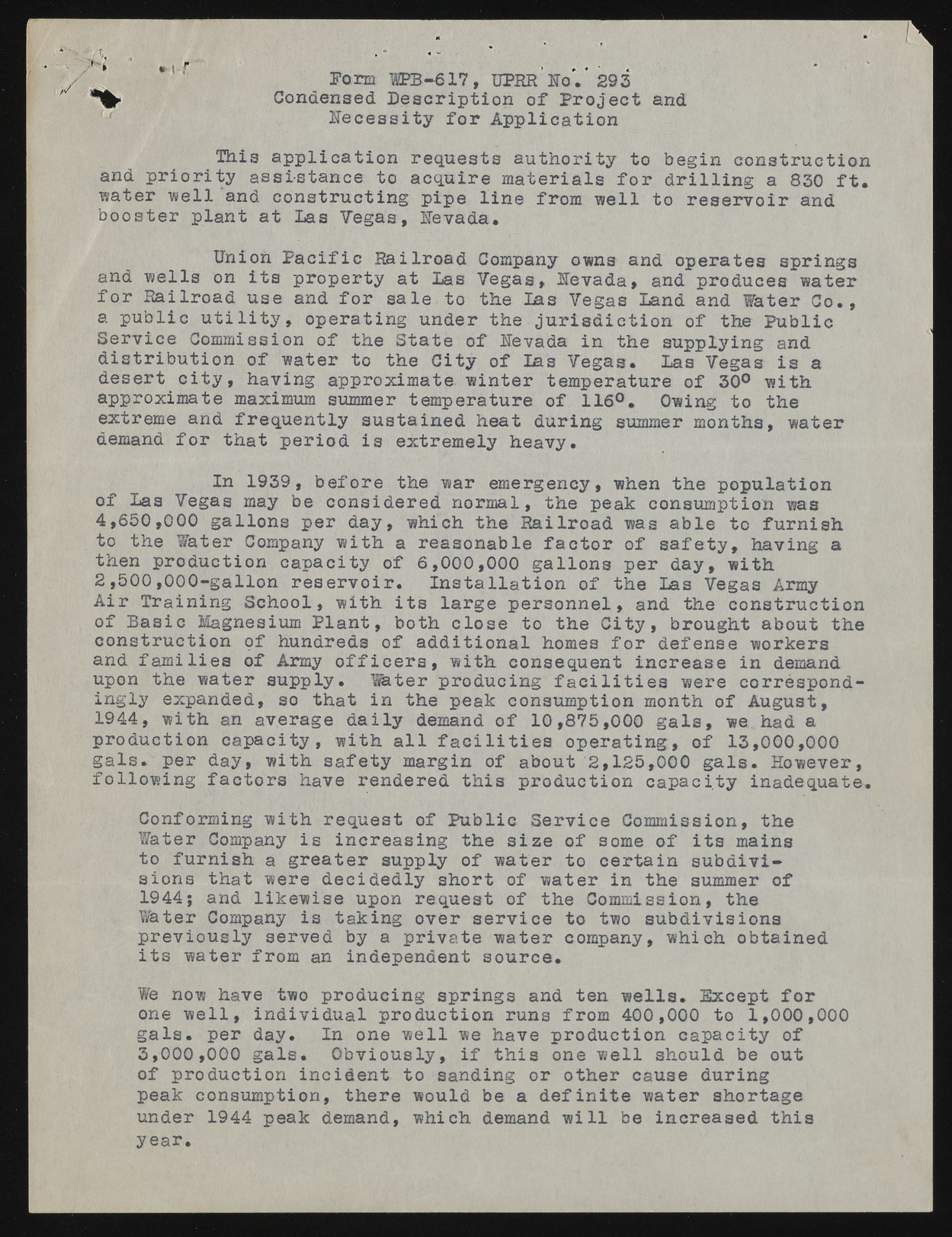Copyright & Fair-use Agreement
UNLV Special Collections provides copies of materials to facilitate private study, scholarship, or research. Material not in the public domain may be used according to fair use of copyrighted materials as defined by copyright law. Please cite us.
Please note that UNLV may not own the copyright to these materials and cannot provide permission to publish or distribute materials when UNLV is not the copyright holder. The user is solely responsible for determining the copyright status of materials and obtaining permission to use material from the copyright holder and for determining whether any permissions relating to any other rights are necessary for the intended use, and for obtaining all required permissions beyond that allowed by fair use.
Read more about our reproduction and use policy.
I agree.Information
Digital ID
Permalink
Details
More Info
Rights
Digital Provenance
Publisher
Transcription
Form WPB-617, UPRR Ho. 293 Condensed Description of P roject and necessity fo r Application This application requests authority to begin construction and p riority assistance to acquire materials fo r d rillin g a 830 f t . ?water well and constructing pipe lin e from well to reservoir and booster plant at Las Vegas, Nevada. Union P a cific Railroad Company owns and operates springs and wells on its property at Las Vegas* Nevada* and produces water fo r Railroad use and fo r sale to the Las Vegas Land and Water Co., a public u t ilit y , operating under the ju risd ictio n of the Public Service Commission of the State of Nevada in the supplying and distribution of water to the City of Las Vegas. Las Vegas is a desert c it y , having approximate winter temperature of 30° with approximate maximum summer temperature of 116°. Owing to the extreme and frequently sustained heat during summer months, water demand fo r that period is extremely heavy. In 1939, before the war emergency, when the population of Las Vegas may be considered normal, the peak consumption was 4,650,000 gallons per day, which the Railroad was able to furnish to the Water Company with a reasonable fa ctor of sa fety, having a then production capacity of 6,000,000 gallons per day, with 2,500,000-gallon reservoir. In stallation of the Las Vegas Army Air Training School, with its large personnel, and the construction of Basic Magnesium Plant, both close to the C ity, brought about the construction of hundreds of additional homes fo r defense workers and fam ilies of Army o ffic e r s , with consequent increase in demand upon the water supply. 'Shter producing f a c ilit ie s were correspondingly expanded, so that in the peak consumption month of August, 1944, with an average daily demand of 10,875,000 g a ls, we had a production capacity, with a ll f a c il i t i e s operating, of 13,000,000 g a ls, per day, with safety margin of about 2,125,000 gals. However, follow ing factors have rendered this production capacity inadequate, Conforming with request of Public Service Commission, the Water Company is increasing the size of some of its mains to furnish a greater supply of water to certain subdivisions that were decidedly short of water in the summer of 1944; and likewise upon request of the Commission, the Water Company is taking over service to two subdivisions previously served by a private water company, which obtained its water from an independent source. We now have two producing springs and ten w ells. Except fo r one w ell, individual production runs from 400,000 to 1,000,000 g a ls, per day. In one w ell we have production capacity of 3,000,000 gals. Obviously, i f th is one well should be out of production incident to sanding or other cause during peak consumption, there would be a d efin ite water shortage under 1944 peak demand, which demand w ill be increased this year.

